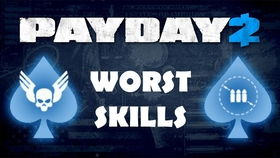Understanding the Market for AI Art

Are you considering selling AI-generated art? The world of AI art is rapidly evolving, and it’s important to understand the market dynamics before diving in. In this article, we’ll explore various aspects of selling AI art to help you make an informed decision.
Market Size and Growth

According to a report by Grand View Research, the global AI art market is expected to reach $XX billion by 2025, growing at a CAGR of XX%. This growth is driven by the increasing adoption of AI in various industries, including art and design. As more people become aware of AI-generated art, the market is likely to expand further.
Types of AI Art

AI art can be categorized into several types, each with its unique characteristics and applications. Here are some of the most popular types:
-
Generative Art: AI algorithms create unique art pieces based on predefined parameters or styles.
-
Augmented Reality (AR) Art: AI is used to create interactive and immersive art experiences through AR technology.
-
3D Art: AI algorithms generate 3D models and sculptures, offering new possibilities in the art world.
-
Music and Sound Art: AI is used to create music and soundscapes, blurring the lines between art and technology.
Target Audience
Identifying your target audience is crucial for successful AI art sales. Here are some potential groups of people interested in AI art:
-
Art Collectors: Many collectors are interested in unique and innovative art pieces, and AI art fits this category.
-
Designers and Artists: Professionals in the design and art industry often look for new tools and techniques to enhance their work.
-
Technology Enthusiasts: People who are fascinated by AI and its applications in various fields may be interested in AI art.
-
Corporate Clients: Companies looking for unique and creative gifts or promotional materials may be interested in AI art.
Monetization Strategies
There are several ways to monetize AI art, depending on your goals and target audience. Here are some popular strategies:
-
Selling Digital Art: You can sell digital copies of your AI art through online platforms, galleries, or your own website.
-
Prints and Merchandise: Create physical copies of your AI art, such as prints, posters, and merchandise, for sale.
-
Custom Projects: Offer custom AI art projects for clients who want unique pieces tailored to their specific needs.
-
Workshops and Tutorials: Share your knowledge and skills by offering workshops, tutorials, or online courses.
Challenges and Considerations
While the AI art market is growing, there are several challenges and considerations to keep in mind:
-
Intellectual Property: Ensure that you have the rights to use the AI algorithms and data you’re working with.
-
Quality Control: Maintain high-quality standards for your AI art to attract and retain customers.
-
Market Saturation: Be prepared for a competitive market, as more artists and creators enter the AI art space.
-
Customer Education: Educate your audience about AI art and its unique qualities to differentiate your work.
Marketing and Promotion
Effective marketing and promotion are essential for selling AI art. Here are some tips:
-
Online Presence: Create a professional website and social media profiles to showcase your work and connect with potential customers.
-
Partnerships: Collaborate with galleries, artists, and influencers to expand your reach.
-
Exhibitions and Events: Participate in art exhibitions, events, and fairs to showcase your AI art and network with industry professionals.
-
Content Marketing: Share your journey, insights, and tips related to AI art to engage your audience and establish yourself as an expert.
Conclusion
Selling AI art can be a rewarding venture
